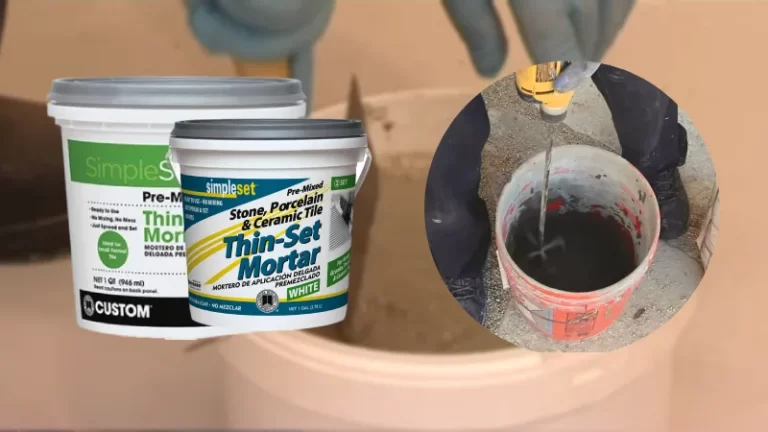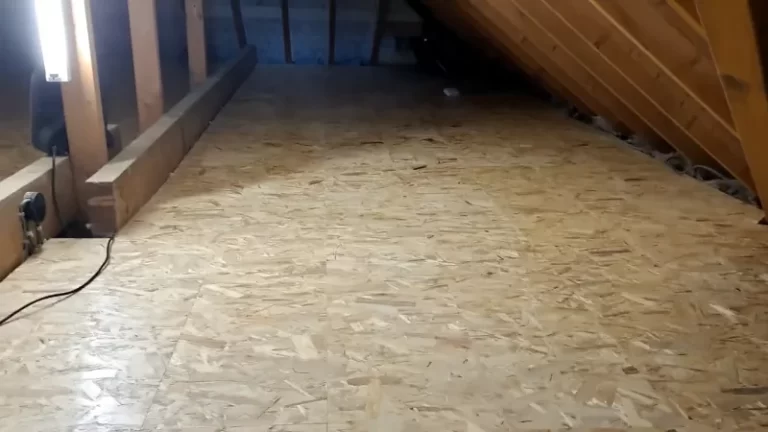Carpet Staples Size: Your Guide to a Flawless Installation
Choosing the right carpet staples size is one of the most overlooked yet critical steps in flooring installation. A seemingly minor mistake here can lead to disastrous results. You might see unsightly bumps, frustrating ripples, or even a carpet that starts pulling away from the walls within months.
This guide illuminates the vital role of staple size in achieving a professional, long-lasting finish. We will explore how to select the perfect staple, ensuring your carpet remains flat, secure, and beautiful for years to come. Understanding this small detail is the secret to avoiding costly repairs and re-installations.
You'll Learn About
Why the Correct Carpet Staple Size is Non-Negotiable
Using the wrong staple is not a shortcut; it’s a guaranteed path to flooring failure. The size of the staple—its length, crown, and gauge—directly impacts the integrity and longevity of the entire installation. It’s the unseen foundation holding your beautiful flooring in place.
When a staple is too short, it fails to get a deep, secure bite into the wooden subfloor beneath the padding. The staple will only hold onto the carpet backing and padding, leading to looseness over time. This is a primary cause of wrinkles and waves that appear as the carpet settles and experiences foot traffic.
Conversely, a staple that is too long creates a different set of problems. It can completely penetrate the subfloor, potentially hitting unseen plumbing or electrical wiring. Furthermore, driving an excessively long staple requires more force, which can damage the delicate carpet backing and even create dimples on the surface.
The Anatomy of a Carpet Staple: More Than Just Metal
To make an informed choice, you must understand the three key dimensions of a carpet staple. Each plays a specific role in how the staple functions. Think of them as a team working together to secure your investment.
First is the length (or leg), which dictates how deep the staple penetrates. Second is the crown, the top horizontal part of the staple, which determines the surface area holding the carpet down. Finally, the gauge refers to the thickness of the wire, which relates to its strength and driving force.
A Deep Dive into Carpet Staple Dimensions
Navigating the world of staple sizes can feel overwhelming, but it becomes simple once you understand the purpose of each measurement. Matching these dimensions to your specific carpet, padding, and subfloor is the key to success. This knowledge prevents guesswork and ensures every staple contributes to a perfect result.
Staple Length: The Critical Anchor
The length of the staple is arguably the most crucial dimension. The goal is for the staple to pass through the carpet backing and the padding, anchoring securely into the subfloor. A simple rule of thumb is to select a staple that is at least 3/16 inch longer than the combined thickness of the carpet backing and the padding.
For most residential installations using a standard 1/2-inch pad, a 9/16-inch staple is the industry standard and a reliable choice. However, if you are using thinner padding or a commercial-grade carpet with a dense, low profile, you may need a shorter staple to avoid over-penetration.
Crown Width: Maximizing Holding Power
The crown is the top “bridge” of the staple. Its width is important for two reasons. First and foremost, it must match the specifications of your staple gun. Using a staple with the wrong crown width will cause constant jamming and misfiring, halting your project in its tracks.
Second, the crown width affects how the staple holds the carpet. A medium crown, such as 3/16-inch or 1/2-inch, is typical for carpet installation. It provides a wide enough surface area to hold the carpet backing securely without being so wide that it becomes noticeable or creates a depression in the carpet pile.
Wire Gauge: Balancing Strength and Subtlety
Gauge refers to the thickness of the staple wire, and it’s an inverse measurement—a lower gauge number means a thicker, stronger wire. For carpeting, a 20-gauge staple is the most common. It offers an ideal balance of strength to penetrate the subfloor without bending, yet it is fine enough not to damage the delicate fibers of the carpet backing.
In some rare cases, with extremely dense carpets or subfloors, a thicker 18-gauge staple might be considered. However, for the vast majority of projects, 20-gauge is the professional standard that provides reliable performance without risking damage to the materials.
The Ultimate Carpet Staple Size Reference Table
To simplify your selection process, we have created a comprehensive table. Use this as a starting point to determine the best staple size for your specific flooring project. Always double-check against your material’s specifications.
| Project Type | Recommended Staple Length | Common Crown Width | Standard Gauge |
|---|---|---|---|
| Standard Residential Carpet (1/2″ Pad) | 9/16″ | 3/16″ or 1/2″ | 20 Gauge |
| Low-Pile / Berber Carpet (Thinner Pad) | 1/2″ | 3/16″ | 20 Gauge |
| Plush or Thick Shag Carpet (Thick Pad) | 5/8″ | 1/2″ | 20 Gauge |
| Stair Installation (Nosing & Risers) | 9/16″ or 5/8″ | 3/16″ or 1/2″ | 20 Gauge |
| Carpet Pad to Wood Subfloor | 3/8″ or 1/2″ | 1/2″ | 20 Gauge |
Selecting Your Staples: A Step-by-Step Method
Follow this simple, methodical process to ensure you walk away with the exact staples you need. Taking a few moments to prepare will save you hours of frustration during the installation. Proper preparation is the bedrock of any successful DIY project.
First, measure your materials. Use a tape measure to determine the thickness of your carpet padding and the carpet itself. Add these numbers together to get a baseline for the required staple length. Remember to add at least 3/16 inch to this measurement for proper subfloor penetration.
Next, identify your subfloor type. This guide assumes a standard wood subfloor like plywood or OSB. If you are working with concrete, staples are not the correct fastener; you will need to use tack strips secured with concrete nails. It’s as important to match the fastener to the base material as it is when deciding on the right hardware for using deck boards for fence construction.
Finally, and most importantly, confirm compatibility with your staple gun. Check the side of the tool or its manual for the required staple specifications. It will list the acceptable gauges and crown widths. Buying incompatible staples is a common and entirely avoidable mistake.

Common Stapling Mistakes and How to Avoid Them
Even with the right staples, installation errors can compromise your work. Being aware of these common pitfalls is the first step toward avoiding them. Precision and attention to detail are your best tools.
A frequent error is using the wrong tool for the job. Never use T50 staples or a standard construction stapler for carpet. These tools lack the specific design of a hammer tacker or electric carpet stapler and use staples that are too thick, which will damage the carpet backing.
Another issue is ignoring the needs of specific areas. Stairs, for instance, are a high-stress area and may benefit from slightly longer staples or more frequent spacing to ensure the carpet stays locked in place. Tackling these unique challenges often requires creative solutions, much like when you must figure out how to drill holes in hard-to-reach places.
The Unspoken Rule: Subfloor Quality Matters
One factor that even experienced installers can overlook is the condition of the subfloor itself. A subfloor that is soft, water-damaged, or inconsistent will not provide the solid anchoring medium that staples require. This can lead to staples pulling out easily.
Before you begin, walk the entire area and check for soft or spongy spots. If you find any, they must be repaired or replaced before you lay down padding and carpet. Ensuring the integrity of your subfloor is as foundational as performing routine home maintenance, such as knowing how to tighten washer hose connections to prevent leaks.
Advanced Insights for a Professional Finish
Going beyond the basics of size can elevate your installation from good to great. Considering the staple’s material and point type demonstrates a commitment to quality and longevity. These details ensure the installation withstands the test of time.
Material Matters: Galvanized vs. Stainless Steel
For nearly all indoor residential applications, galvanized steel staples are the standard. The galvanization process provides a protective zinc coating that effectively resists rust from ambient moisture. This is perfectly adequate for living rooms, bedrooms, and hallways.
In environments with high humidity or the potential for moisture, such as basements or certain commercial spaces, upgrading to stainless steel staples may be a worthwhile investment. Stainless steel offers superior corrosion resistance, ensuring the staples will not degrade and fail over time due to damp conditions.
Point of Impact: Chisel vs. Divergent Points
Most carpet staples feature a standard chisel point. This design allows the staple to drive straight and smoothly into the wood subfloor with minimal resistance. It is effective, reliable, and suitable for the vast majority of carpeting projects.
Divergent point staples are a specialty option where the tips of each leg are cut at an opposing angle. As the staple is driven, the legs “diverge” or splay outwards into the wood. This creates a stronger hold and increases resistance to being pulled out, which can be beneficial for high-traffic areas or on stairs.
Frequently Asked Questions About Carpet Staples
Here are answers to some of the most common queries regarding carpet staple selection and use. Having clear answers to these questions can provide the final piece of confidence you need to tackle your project.
What is the best all-around staple size for general carpeting? For standard residential carpet over a 1/2-inch pad on a wooden subfloor, a 20-gauge, 9/16-inch length, 3/16-inch crown staple is the most widely used and recommended size.
How many staples will I need for my project? When stapling carpet padding, a good rule is to place staples every 6-8 inches around the perimeter and in a grid pattern across the field. For the carpet itself, staples are typically used on stairs and seams, with spacing every 3-4 inches.
Conclusion: The Small Staple That Makes a Big Difference
The success of your carpet installation rests on the smallest of details. By taking the time to understand and select the correct carpet staples size, you are not just fastening a floor covering; you are ensuring its stability, appearance, and durability for years to come. This foundational step is the true secret to a professional-quality result.
Armed with this knowledge, you can approach your project with confidence. Measure your materials, check your tool’s requirements, and choose the right staple for the job. Your efforts will be rewarded with a beautiful, secure, and long-lasting carpet that enhances your home.


